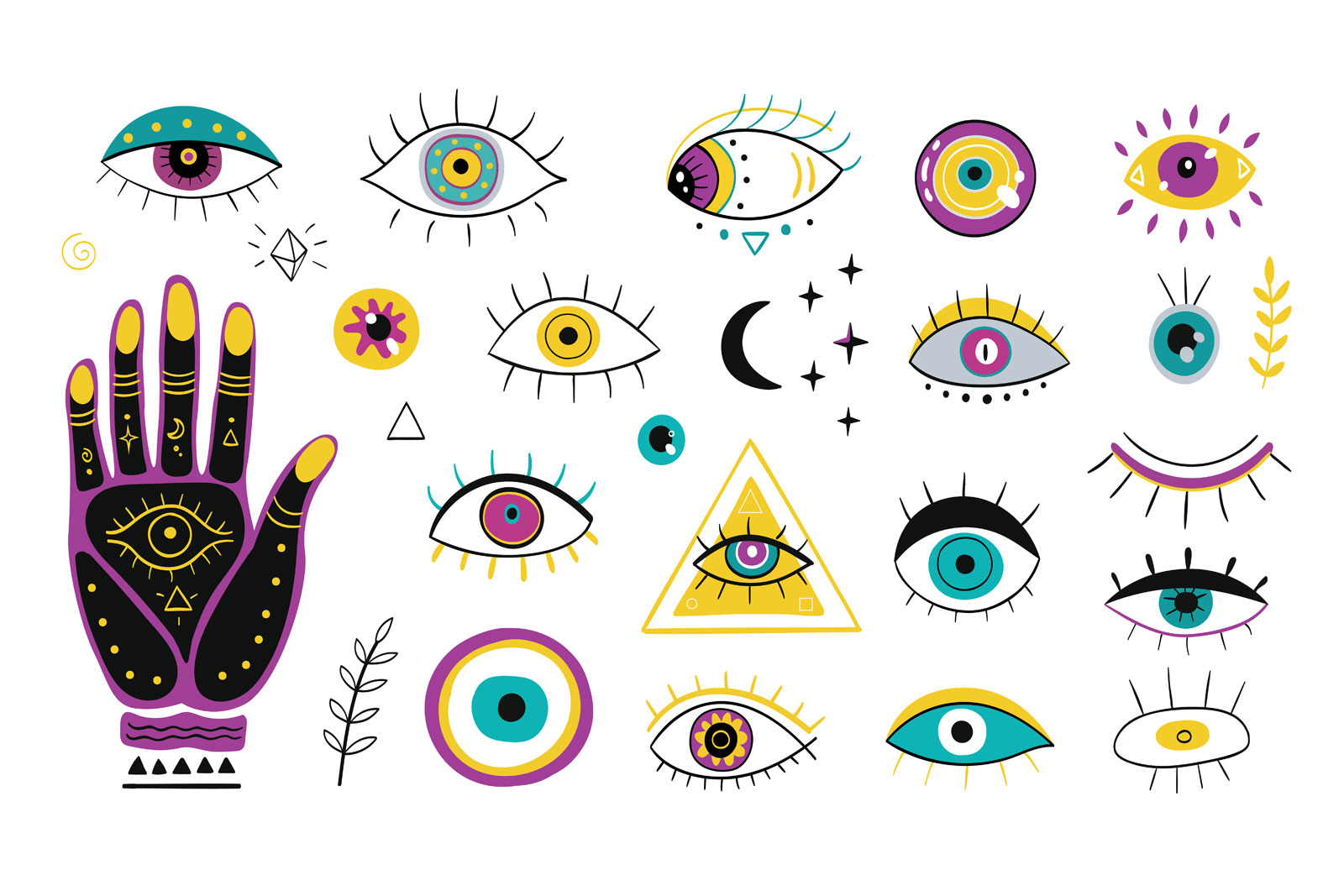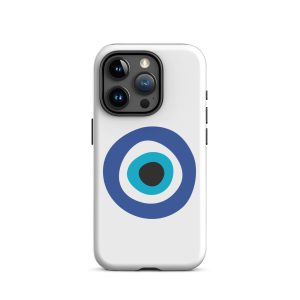The Evil Eye: A Universal Fear
The evil eye, a malevolent glare believed to inflict harm or misfortune, is a concept that transcends borders and cultures. From the bustling streets of Naples to the tranquil villages of Anatolia, the fear of the evil eye has persisted for centuries, woven into the fabric of human superstition and folklore. This potent belief in the power of a glance to cause harm has given rise to a rich tapestry of protective rituals, symbols, and talismans across the globe.
The Power of Words and Symbols
In the face of this universal fear, cultures have developed an arsenal of tools to ward off the evil eye. Words, often whispered in secret incantations or prayers, are believed to hold protective power. Symbols, like the iconic blue eye bead or the Hamsa hand, are worn as amulets or displayed in homes and businesses to deflect negative energy. Rituals, ranging from simple gestures like spitting or knocking on wood to elaborate ceremonies involving fire and incense, are performed to purify spaces and individuals from the evil eye’s curse.
A Global Glossary
Mediterranean:
Malocchio (Italy): In Italy, the term “malocchio” evokes a potent curse cast by a malevolent stare. To counteract it, Italians wear the cornicello, a horn-shaped amulet often made of coral or gold. This symbol of protection is believed to deflect the evil eye’s power and bring good luck.
Mati (Greece): The Greek word “mati” signifies both the evil eye and the protective power that counteracts it. Ancient Greeks believed that certain individuals, often those with striking blue eyes, possessed the ability to cast the evil eye. To ward off its effects, they might perform ritualistic spitting or wear blue beads, believed to mimic the evil eye and thus neutralize its power.
Middle East:
Nazar (Turkey): The Turkish word “nazar” refers to both the evil eye and the ubiquitous blue eye bead amulet that protects against it. These glass beads, often adorned with concentric circles of blue, white, and yellow, are omnipresent in Turkish life, found on everything from jewelry and keychains to airplanes and buildings.
Ayin Harsha (Hebrew): In Jewish tradition, the evil eye (“ayin harsha”) is often associated with envy and jealousy. The Hamsa hand, a palm-shaped amulet with an eye in the center, is a popular symbol of protection against the evil eye.
Asia:
Drishti (India): The Indian term “drishti” refers to the evil eye, often believed to be cast by a jealous or envious gaze. To counter its effects, Indians may use remedies like lemon and chili peppers, which are believed to absorb negative energy.
Alami (Pakistan): In Pakistan, the evil eye, or “alami,” is a common superstition often linked to misfortune and illness. Protective measures include wearing black thread or reciting specific prayers from the Quran.
Africa:
Ain al-Hasud (Arabic): The Arabic term “ain al-hasud” describes the evil eye, which is considered a potent force in Islamic culture. The Hand of Fatima, a palm-shaped amulet with an eye in the center, is a popular symbol of protection worn by both Muslims and Jews.
Iluora (Nigeria): In Nigeria, the evil eye, or “iluora,” is often associated with witchcraft and sorcery. Protective practices include using cowrie shells, red palm oil, and other traditional remedies to ward off its harmful effects.
Check some awesome products with Evil Eye
Evil Eye Crossbody Bag
Shield yourself from negativity in style with our Evil Eye Crossbody Bag. This beautiful and functional bag features a vibrant Evil Eye emblem, spacious interior for your essentials, and an adjustable strap for comfortable wear. Perfect for everyday outings, it adds a touch of protection and timeless design to your look.
Evil Eye Drawstring Bag
Carry your essentials with confidence and a touch of mystique in our Evil Eye Drawstring Bag. Made from durable fabric, this versatile bag features a bold Evil Eye design and a convenient drawstring closure. Ideal for the gym, errands, or a quick trip to the market, it offers protection and effortless style.
Evil Eye Case for iPhone®
Safeguard your phone in style with our Evil Eye iPhone® Case. This sleek and protective case features a stunning Evil Eye design to shield your device from harm, while the lightweight design ensures comfortable use. Choose from a variety of models to perfectly fit your iPhone®.
Evil Eye Embroidered Beanie
Stay warm and ward off negativity during the colder months with our Embroidered Evil Eye Beanie. This cozy beanie features a beautiful embroidered Evil Eye design, offering both protection and comfortable warmth. Available in a variety of colors, it’s a stylish way to embrace the Evil Eye’s power throughout the year.
Conclusion: The Evil Eye: A Timeless Superstition
The evil eye, a concept as old as civilization itself, continues to hold sway over the human imagination. This global glossary has merely scratched the surface of the rich and varied tapestry of beliefs, rituals, and symbols associated with the evil eye. While the scientific validity of the evil eye may be questionable, its enduring power as a cultural phenomenon is undeniable.
Protection and Empowerment
The evil eye serves as a reminder of the interconnectedness of human experience and the universal fear of misfortune. While the specific manifestations of this belief vary across cultures, the underlying desire for protection and well-being remains constant. By understanding and appreciating the diverse traditions surrounding the evil eye, we can gain a deeper appreciation for the human spirit’s resilience and creativity in the face of adversity. Whether worn as a talisman, invoked in prayer, or simply acknowledged as a cultural symbol, the evil eye continues to offer a source of comfort and empowerment for people around the world.












